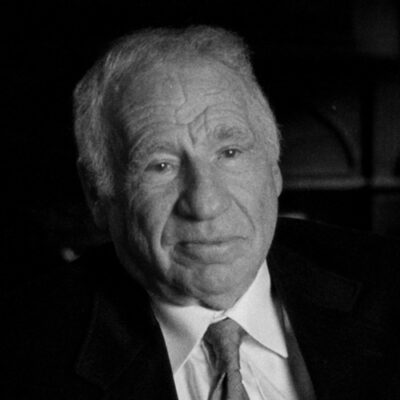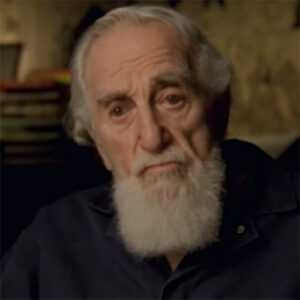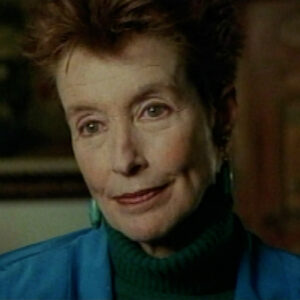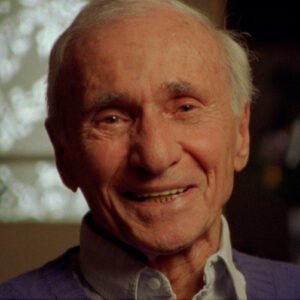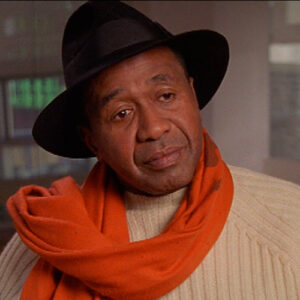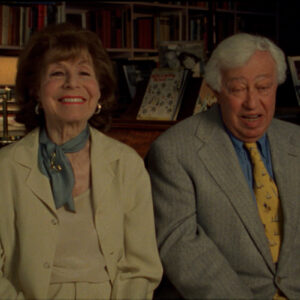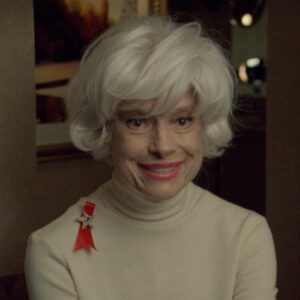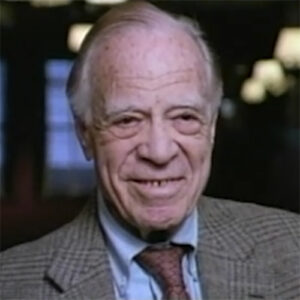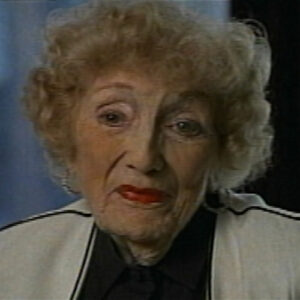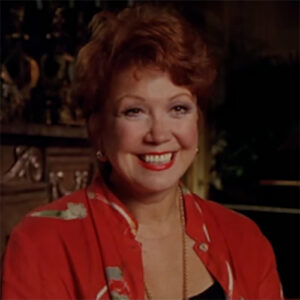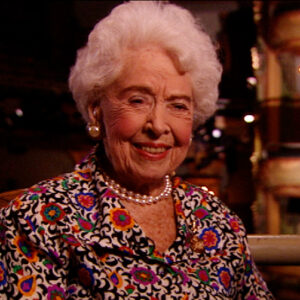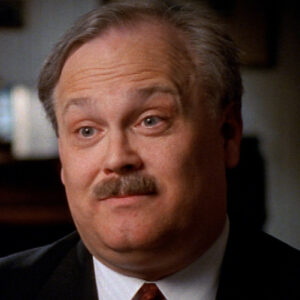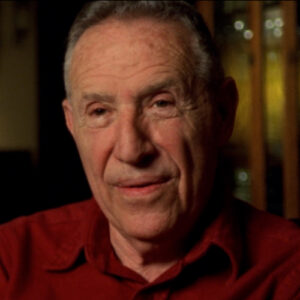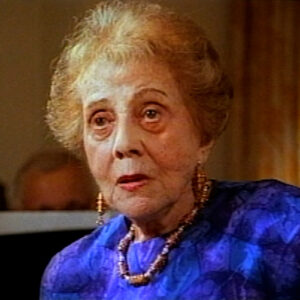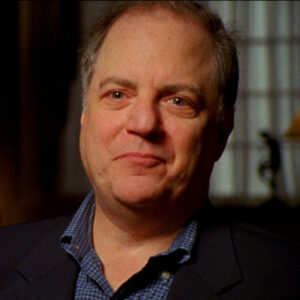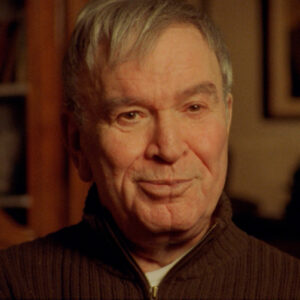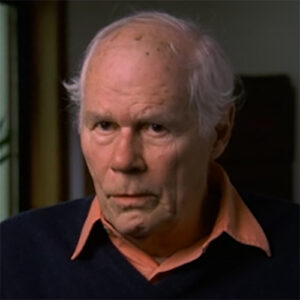Michael Kantor: Let’s start with that question we were just talking about for you brought start with Broadway is what is Broadway?
Baayork Lee: To me, Broadway is a New York state of mind. And I say that because wherever I go in the world, people want to know about Broadway, whether it’s Times Square, 42nd Street, or a Broadway show. There’s something about New York. And New York is just attached to Broadway. It’s one in the same.
Michael Kantor: That’s great, that was the best moment we’ve had yet. Well, very briefly, what was your first Broadway show and what was its basic storyline? Like in one sentence, what’s it about? First Broadway, it’s the first time you’ve appeared on Broadway.
Baayork Lee: My first Broadway show was The King and I, with Yul Brynna and Gertrude Lawrence. And what was it about? It was about the king.
Michael Kantor: George Wolfe said, you know, his reaction to that show is, I can’t believe I’m watching this show, this wonderful show, but I realize it’s about the West, a woman violating an entire culture while singing Getting to Know You. What’s your take on sort of how we should feel about King and I in that sense?
Baayork Lee: Well, now that I’m older, I was only five years old then, I think it’s so wonderful to see another culture on the American stage. It’s very, very exciting. The East used to be so mysterious. And to have Mrs. Anna come over and greet us and sing to us and whistle to us, and bring her Western ways to us. I think it’s wonderful. And to be in that show at five, it changed my whole life. It changed my life. I knew that I was going to be a Broadway dancer. I knew I was gonna be on Broadway. I just knew Broadway was Broadway in my life
Michael Kantor: So George Wolfe’s comment about, you know, American imperialism and the idea that she changes that culture, that doesn’t, for you that’s not the important part of the show. What’s the important parking.
Baayork Lee: The important part of King and I is the awareness of what was going on at the time. Of course, it’s very important that the imperialism and all of that, but that’s going on now. We have kings now. But the fact that Rogers and Hammerstein wrote that show in 1951, I think they were really trying to make a broad statement.
Michael Kantor: That’s perfect. Tell us how in Rodgers and Hammerstein shows, they were really the first in some way led choreography to tell the story. And you can start with Dream Ballet or wherever you want to think about. But in a way before those guys, choreography had a slightly different place. So tell us how Rodgers& Hammerstein’s shows helped bring choreography to a different level.
Baayork Lee: Um, Rajshan Hammerstein’s show is, um… Brought choreography to a different level because they allowed Agnes DeMille to really change the form of Broadway shows. Before it was just singing and acting and telling the story, but they allowed her to create the dream ballet and bring the the ballet world. Onto the Broadway stage. They also did it with the Uncle Tom’s cabin in the King and I. And in Flower Drum’s song, we also had a dream ballet that we were in.
Michael Kantor: Let’s go back to King and I. In our story, we’ll have looked at Carousel and Agnes’ work, and by the time we get to King and I, we will focus on Small House of Uncle Thomas. But describe for us how it wasn’t just with Agnes DeMille in the first few shows that Rogers and Hammerstein were interested in ballet and dance telling a story. Even in King and and I and then just very briefly describe what Small House of Uncle Tomas does and who was in it.
Baayork Lee: Oh dear.
Michael Kantor: So, by the time of King and I, let’s just start there and just what did the choreography mean to them for King and
Baayork Lee: Well, the choreography of the small house of Uncle Thomas described what was going on in the play with the actress, the character Top Dim. And she was a slave that was brought over and given to the king. And she used the book that Mrs. Anna gave her to tell her story. And Jerome Robbins did it in the dance form. And once again, it was so wonderful to see Thai dancing on the American stage, or his version of Thai dancing.
Michael Kantor: Take that a little bit broader, if you would. Say, first Rodgers and Hammerstein worked with Agnes DeMille, and then in King and I, they got another titan of the Broadway theater, Jerome Robbins, who did what he did. Just help us frame that. So first, Rodgers and Hammerstein worked with one really important choreographer.
Baayork Lee: Rodgers and Hammerstein worked with Agnes DeMille and did this and changed the form, I believe, of dance in theater. And then they went on to Jerome Robbins, who did this incredible ballet, Small House of Uncle Thomas, and then Flower Drum Song. We also had a ballet, and Carol Haney was our choreographer. So I really think they really pushed dance ahead in the Broadway theater.
Michael Kantor: So how were, and were they, and how were Rogers and Hammerstein a pioneer in opening a door on Broadway for ethnic minorities?
Baayork Lee: Rodgers and Amherstine were pioneers in opening up the doors to ethnic and minorities in the theater. I think they consciously knew what they were doing, at least I hope. Because with King and I and Flower Drum Song and South Pacific. It was so, at the time, I guess shocking. And I really think they wanted to open up the avenues to controversy.
Michael Kantor: Our episode title is tradition, but in a way, you know, tradition, that’s sort of an ironic title. What happened to Broadway in the 60s? Did it change?
Baayork Lee: Mm, did Broadway change in the 60s?
Michael Kantor: The whole country was embracing their music.
Baayork Lee: Yes, it changed. I think Broadway changed in the 60s because of the music, because of what was happening outside of the theater. And working for Michael Bennett was just incredible because we would go out dancing every single night at the discos, you know, and then to have a show like Promises, Promises come along with Burt Bachrach, and we’d dance to him every night at the disco. And now we were in the theater dancing to his music. And we were doing the same steps. So the music and Michael Bennett, I think, kind of pushed that ahead also.
Michael Kantor: The 60s were a time of change. And you were in a show, I think, around 1964 called Golden Boy. How did that show reflect changing times and what have you?
Baayork Lee: Golden Boy reflected the change in times because of the whole Martin Luther King movement. And I just remember one night in Chicago, we were out of town before we came into Broadway and Sammy Davis kissed Lorna. Who was the character, who was a white woman on stage, and the entire balcony erupted. And they had to call the police, and we were escorted outside. There was almost a riot in the theater. When we got to Broadway, it was a little more subdued, but that was a sign of the times, and that reflected in the show.
Michael Kantor: The times were changing in the 60s and tell us about how times were changing and Broadway was a part of that.
Baayork Lee: Um, Golden Boy was part of that change in the 60s, and it reflected what was going on in the world, or in our country at that time. And I just remember one night we were in Chicago, and there was a scene where Sammy Davis kissed Paula Wayne, a white actress. And the entire balcony and theater erupted. And they had to call the police, and we had to be ushered out under police guard. And that was what the country was feeling.
Michael Kantor: Um. So just overall, do you think the Broadway musicals in the 60s were in touch with their times? You have Cabaret, Promises, Promices, Hair. I mean, what was the hip show?
Baayork Lee: The hip show, I think, was hair, and I wasn’t a part of that, but I was in a show called Henry Sweet Henry, and Michael Bennett choreographed a hippie number, his version of what maybe hair should have been, a dance version. And it took place in the park down on, oh dear, what park is that? Washington Square Park. And we were smoking weed and we were all, you know, underwater and that was Michael Bennett’s version of his hair.
Michael Kantor: So speak to, I mean Michael Bennett, the way you’ve been discussing him, is really a sort of new generation who’s up with his times. Did he sort of take a baton from someone else or did he just emerge as, speak to who was Michael Bennett and the force that he brought into the Broadway.
Baayork Lee: Michael Bennett, I don’t know, I don’t think he took the baton from anyone. I think he just took the bull by the horns and he was there at the right time and the right place. Theater was changing, the music was changing, he was really into what was happening in contemporary dance. He was not a ballet dancer and he just brought us along with him. He always wanted to be a choreographer. I don’t really think he wanted to perform that much. And I think he was there at the right time, in the right place. And he really knew how to put what we did on the stage. And not a lot of people know how to do that. He visually knew how do that, to take what we do at the disco and get the dance arranger and the drummers to… Get it on the stage.
Michael Kantor: Great, just help us, he started as a Broadway dancer, right? So in a way, he’s not coming out of that world of ballet, but he’s learning how to put a number over. Yes. Tell us about that.
Baayork Lee: Michael did not come out of ballet, but he came out of jazz and tap, and he was a performer. And visually, he just knew how to do it. And I would really be in shock sometimes, because I grew up with him, I took dancing lessons with him. And I would say, how did, how, where did that come from? It’s so exciting. He would just walk in the room and he asked the drummer, Bobby Thomas, play the drums and he would dance for hours. And I was lucky enough that I could write it down fast enough and then reproduce it for him. So I think that’s why I’m here.
Michael Kantor: What is, how does Turkey Lurkey Time speak to Michael Benn?
Baayork Lee: The turkey lurky is right from its time, from the 60s, and we are doing the pony and the jerk and he just knew how to climax a number, how to put the button on it. It just came natural to him. I think Chorus Line was important to Broadway because at that time it was another change in the format of theater. We had no star, no intermission, practically no scenery or costumes. We were in dance clothes. I think it made the big musicals distinct. We were small. And also, it gave the dancer a voice. And the name Triple Threat came out of that. The singing, dancing, and acting performer. And At that time, I mean, I was just a dancer. And if I could carry a tune and I worked for Michael Bennett, I could get a job. But after a chorus line, you really had to study your craft, all three of them. And that, having gone all over the country and the world now, we have singers, dancers, and actors. They are studying. They’re coming to New York. They are setting with our teachers. And, um… So the world is getting smaller. And I think Course Line had a lot to do with that. I was one of the first directors to go around the world and reproduce exactly the show that Michael Bennett created on Broadway. And then Cats came after that, and Les Mis, and all the other shows. But he sent us to Australia and to Stockholm and to Germany and Japan. To make sure that everybody saw the show that he created on Broadway.
Michael Kantor: That’s great, you know, I want to go back to that big first question, you know, what is Broadway? In a way, Broadway is, Broadway’s exporting the New York State of Mind to every corner of the world. Help us understand that, just if you, I mean, you touched on it, but Broadway is sort of an American…
Baayork Lee: Broadway is an American icon, and you can’t take it with you. You can just live it. And when I go to Italy or all these foreign countries, they want Broadway. And that is the energy, the expertise, and the professionalism. And I do seminars all over the world. And they want Broadway. That’s all I can say.
Michael Kantor: That’s great though, that’s perfect. What about, you know, a chorus line was first, just very quickly, it was created by people’s real stories and it was called like a dancer’s project and it established a way of work chopping that had never been done before. So I guess, as concisely as you can work us through that.
Baayork Lee: When we started A Chorus Line, it was called The Dancer’s Project that was happening downtown. It was very hush-hush and it was a secret. And then it was the first time that someone got a group of people together and developed a project. We would start every day with a blank page. And our lives were a part of the process. I played myself. My monolog is that dialog I made up. I did make up. That’s my monolog. That was very, very unusual. So we were not acting. We were just being. And that’s another point in what Course Line did for Broadway. You saw people on stage living their lives and telling you about it. Well, we were… A workshop, a work in progress, and it was very, very unusual at that time. You had the big producers who produced shows and got people together, and it wasn’t a Broadway show, but to spend almost a year on a piece or being allowed to spend a year that Joseph Papp gave us to develop the piece was extremely unusual. And then us playing our own lives on the stage. I have a line in a song that says I’m four foot ten, and I am. But then we opened on Broadway and we were a huge hit and then we came to Broadway.
Michael Kantor: We open it to the public. Take that back. First, the show was done in the public, here we go.
Baayork Lee: Yes, first the show was done at the public theater and we were a huge hit and within months we opened on Broadway. So that was really, really unusual.
Michael Kantor: How does the opening of a chorus line in the way that, you know, good openings of any show, but how does the open of a course line hook you? Like you’re out there in the audience and it just sets the stage for the rest of the evening. What does it do?
Baayork Lee: I think the opening of A Course Line hooks the audience because they are in the back of a house in a dark theater and they are watching an audition that people are not usually allowed to go to. And they also become the judges. And they start rooting for the characters that they like. And that goes throughout the show. First, they see them dance. And then they hear their names, and then they start hearing their stories. And they start judging who they like and who they want to have the job. And then at the end of the show, they are sometimes disappointed and sometimes not.
Michael Kantor: Great answer, thank you. And how does the finale work to sort of top everything?
Baayork Lee: I think the finale of A Chorus Line ties everything together because after two hours of spilling our guts out and just cutting our wrists and giving this choreographer everything that we have and begging him practically for the job, you finally get to see the job that we are auditioning for and we are all in the same costume and we all look alike and we all dance alike. A Chorus Line.
Michael Kantor: Great. What was the hit song of a chorus line, and what’s it really about? I think.
Baayork Lee: Well, there are two hit songs in a chorus line. I think the one that was the biggest hit was What I Did for Love. And what is it about? It’s about all of us who put ourselves out there, not for money, not for fame, but for inner satisfaction and love. And we never ask for anything in return except for us to give.
Michael Kantor: How did it feel when Chorus Line moved to Broadway? I mean, when Chorus Line moved to Broadway, Broadway was suffering. And Chorus Lines impact across not just Broadway, but tell us about that. When Chorus line moved to Broadway.
Baayork Lee: When Chorus Line moved to Broadway, there was a musician strike. And we were a nervous wreck because, first of all, we never thought it would move. We didn’t know what we were in. We were just doing a project, this little dance project, and all of a sudden, everybody was interested in this girl who was 4 foot 10. Broadway was in need of a big hit. And there we were. I think we came in at the right time. We were in the right place at the right time
Michael Kantor: It didn’t, of course, have an impact on, you know, clothes, movies, Broadway. I mean, its impact was sort of across the culture. Describe that for me.
Baayork Lee: Chorus line’s impact on Broadway movies. Jane Fonda started her aerobics. Everybody was dancing. And that was wonderful for the dancer. The dancer was finally recognized, not only to be a triple threat, but everybody wanted to dance.
Michael Kantor: Broadway was a place that could make stars. You didn’t want to be a star, but what about Michael Bennett? Wasn’t sort of stardom always a part of his character?
Baayork Lee: Um, I don’t think stardom was a part of Michael Bennet’s character, him being a performer as a star. As a star director, choreographer, yes. I mean that was written all over his personality. He was a star just walking down the street. I didn’t want to be a star because, I don’t know, I think it was the, um, the um… Side of me that said I’m short, I’m Asian, I don’t really sing, I can’t be a star, but I certainly can work.
Michael Kantor: But I mean, isn’t it true that Broadway in the 60s and through into the 70s was still making stars? You have Barbra Streisand, you have, you know…
Baayork Lee: But that was one out of a million. Barbra Streisand was one of a million becoming a star. How many thousands of singers and dancers were they at that time? And there was only one star. And I think Course Line really says it, when Michael put that white line on the floor, when we stood And on the line, we were the stars. When we’re behind the lines, we were just in the chorus. The Broadway community is really involved in the AIDS movement because we have lost so many performers, especially a course line and cats and dancers. The 70s were very promiscuous times. We would dance all night, and so many things You know, more happening at that time. And the effect came down the pipeline, and Broadway has truly been affected.
Michael Kantor: How would you say the role of dance in Broadway musical theater has changed since you’ve gotten involved? Has it changed? Is it the same as, you know, or is it very different?
Baayork Lee: The role of dance in the Broadway theater has definitely changed. When I started out in shows, you would have maybe two or three dance numbers and you would dance behind the star. And now you have shows like Contact and Moving Out, where it’s all dance. I think it has taken a big, big move forward. Uh… Susan stroman and and all the choreographers now the audience wants to see dance and they’re giving it to them
Michael Kantor: What do you think a dancer on Broadway does that a dancer nowhere else does?
Baayork Lee: A dancer on Broadway does everything now. As I said before, we only danced before. Now you have to sing, dance, and act. And it’s not only on Broadway now, but it’s reaching out around the world because there’s a mini Broadway in Hamburg and a mini-Broadway in Vienna and in Sydney. They’re all little… Communities that have our imports there, and so they have to sing, dance, and act now.
Michael Kantor: So yeah, try and bring in why it’s called A Chorus Line for the New York Times ABCs. But from the beginning, do you think Michael Bennett conceived of a chorus line as something big and something that, something of. How did he plan it? Tell me about that.
Baayork Lee: I don’t know if Michael thought that core slime was going to be big. I know he knew that he was going to make a statement. But he planned everything, pretty much. In the ABCs and the New York Times, he wanted a chorus line, because we used to say chorus line, and he said, no, I want it to be first. So it had to be a chorus line. And… I don’t think he planned it to be as big or I don’t even think he knew how big it was going to be. When I started going to Australia and Japan and Stockholm and Germany and all those countries and giving them our show, Michael never went. So I was the only one that got to see what he, the seeds that he had planted.
Michael Kantor: Did a chorus line change Michael? Did he work or live differently after it became a big hit?
Baayork Lee: Hmm. A course line changed everybody, including Michael Bennett. Good or bad, some people could not handle the success, some people left the business, some people fought to stay in the business. Some people made lots of money. Some people wanted to do their act. And he was absolutely right. It changed our lives forever. And I’m sure his also.
Michael Kantor: Tell us about the myth of Broadway.
Baayork Lee: The myth of Broadway, everyone thinks that you can come to New York and become a star, and you can just write a play and someone’s just going to pick it up and you’re going to produce it, and it really doesn’t work that way. It’s all about hard work and making the right connections, being at the right place at the right time.
Michael Kantor: Do you think, you know, in our first episode, I keep thinking there’s this idea of Broadway offers an opportunity to everyone, race, creed, you now, Burt Williams, we have this black comic and so on. Do you that’s true or do you think it’s really also a bit of a myth that there’s room for everyone on Broadway?
Baayork Lee: I think it’s a myth that there’s room for everyone on Broadway. It depends on the product. There’s a place for every product, but it may not be Broadway. It may be off-Broadway. It might be in regional theater. So many wonderful things are happening in regional theater and off-broadway, so it’s It’s not always Broadway that things end up. A big success.
Michael Kantor: So what does that say about Broadway that it doesn’t, it’s not sort of really a wide open, what does it mean about the commercial nature of Broadway? It’s a tough question. Let’s think about the Miss Saigon thing. There’s a big controversy over casting Jonathan Price in Miss Saigan. What’s your take on casting and opportunities for Asian actors, black actors, ethnic minorities on Broadway?
Baayork Lee: Well, the field is almost wide open now. Back in the 60s, you’d only have one Asian, me, or one African-American. And during the time of a course line in the 70s, there was a ruling that you had to take one. And so in a course-line, there’s Ron Dennis, who plays the African- American, and myself. And he is my competition. And nobody else on the stage. Yeah, now it’s much more liberal. And now you can audition for a show, and if you’re talented, you can get in. The controversy with Jonathan Price coming over to do Miss Saigon, it was really a big deal at the time, because he was acting as an Asian. And of course, we have Asians here. It really was the question of, do we strike the whole project because of that one person, or do we allow 50 people to work for seven years? And I think they made the right decision, letting him in for six months and passing the role on to an Asian and giving people work.
Michael Kantor: Great. Do you have a favorite all-time most important Broadway performer of all time or no?
Baayork Lee: My all-time Broadway performer, there are two of them, and that’s Gwen Verdon and Cheetah Rivera. I love them.
Michael Kantor: What is it that they have that you think is something…
Baayork Lee: They gave the dancer hope that we could be just like them because they came out of the chorus also.
Michael Kantor: Take that a different way. In the late 50s and early 60s, there were dancers who came out of the chorus and became stars and inspired a lot of the rest of us. Try it that way, just in case that’s the way we need it. There were people like…
Baayork Lee: And there were people like Chidra Vera and Gwen Verdon that came out of the chorus and became stars and that really inspired all of us little dancers. I think Oscar Hammerstein did Carmen Jones because Gershwin did Porgy and Bess. And that was such a huge success and it was all African Americans and that’s just my My take on it.
Michael Kantor: Why should people care about the musical?
Baayork Lee: Why should people care about the musical? It says so much to us. The musical says so much to us, I think people should really care. Because. You go to the theater to feel better, to learn, to be taught, to socialize. I mean, it’s all a part of it. It’s not only what’s going on on the stage. It’s who you’re sitting next to in their opinion. It’s a whole package. And New York and Broadway are synonymous.
Michael Kantor: Does it say anything about America? Because it’s a uniquely American form. It didn’t happen in Paris, it didn’t… Why is it American? What does it mean to us? Or say to us, or represent about us?
Baayork Lee: Oh dear. That we are, that we’re free, that we are fun-loving, we love controversy, we love drama, that…
Michael Kantor: Just put it in terms of as Americans just one of the as Americans
Baayork Lee: As Americans?
Michael Kantor: Yeah, whereas it’s an American art form because…
Baayork Lee: It’s an American art form because we are free, fun-loving, dramatic, and wonderful people.

